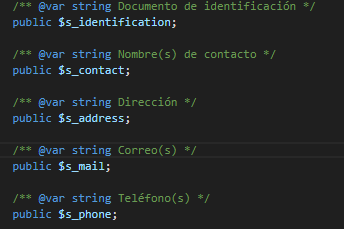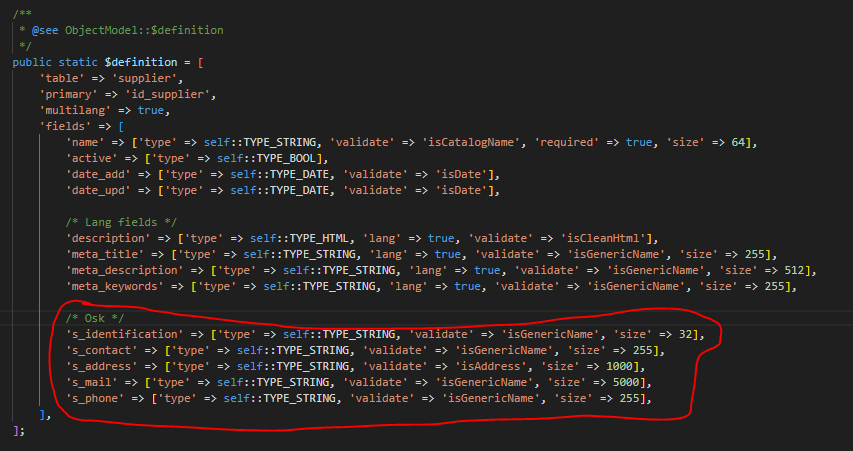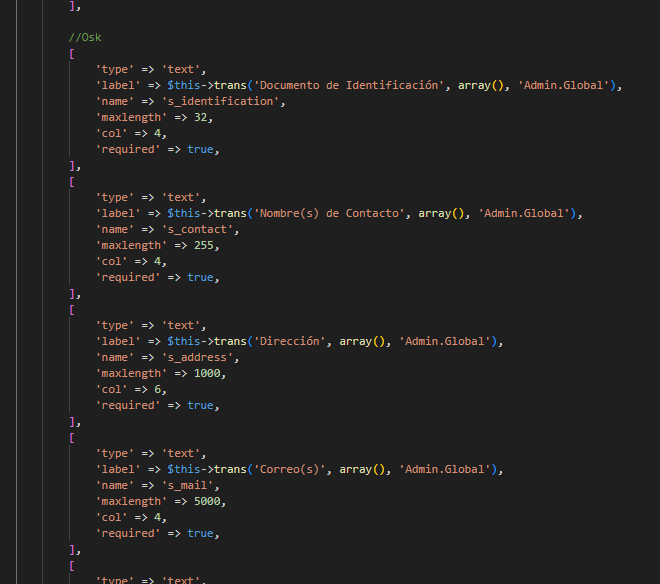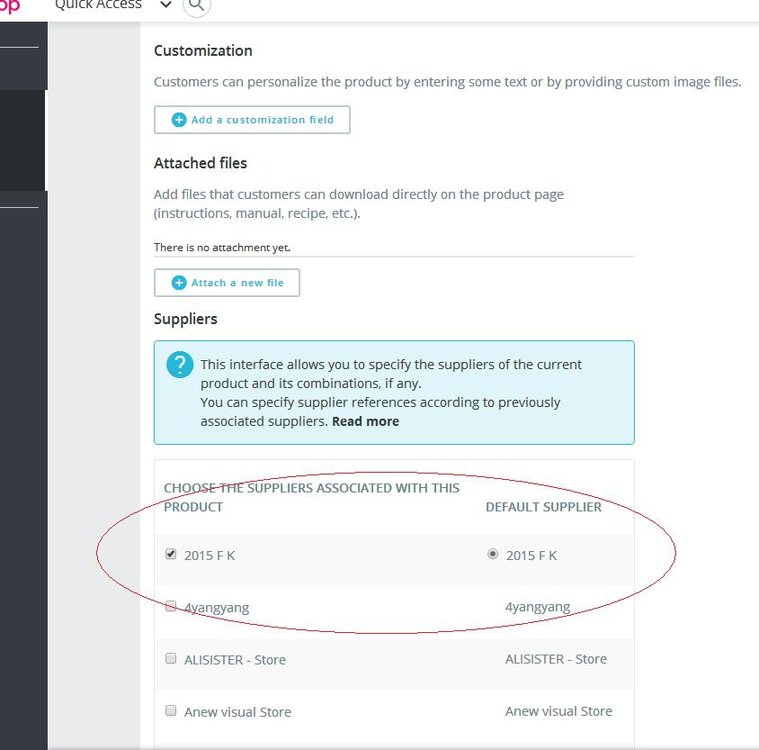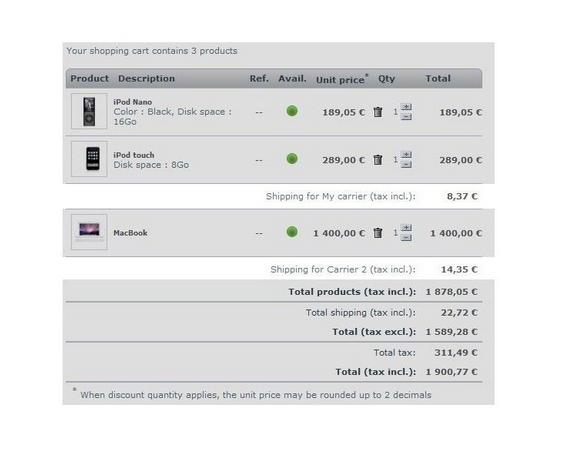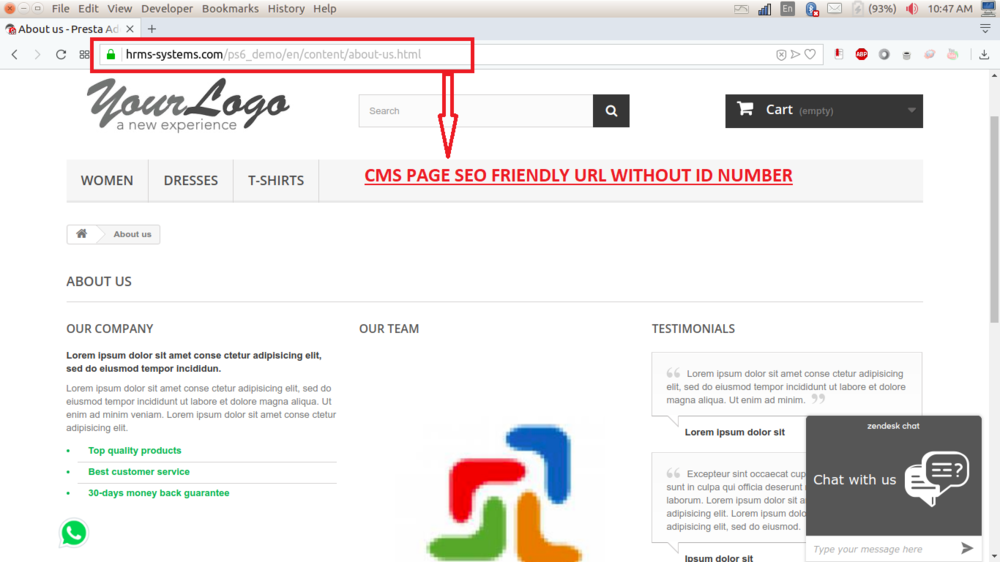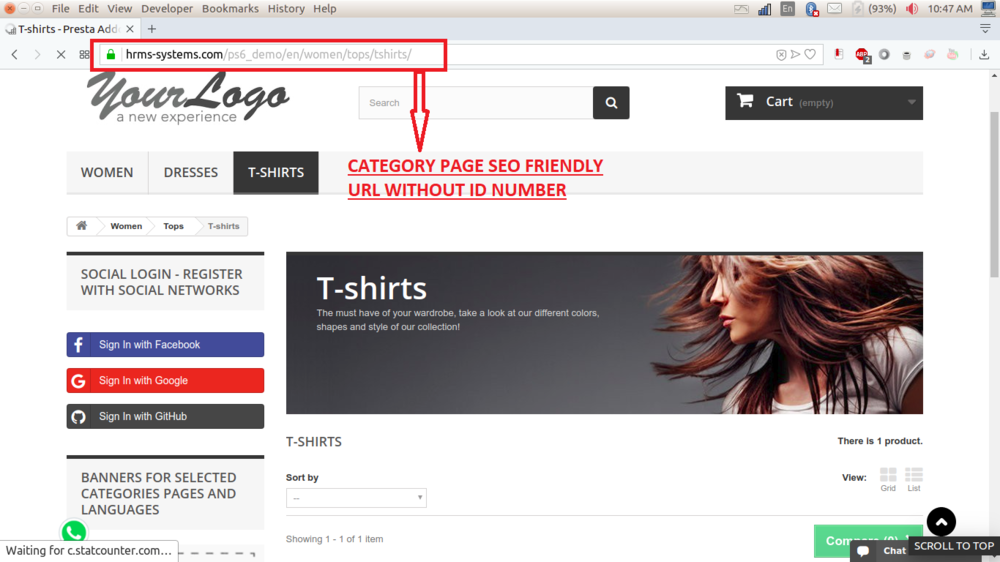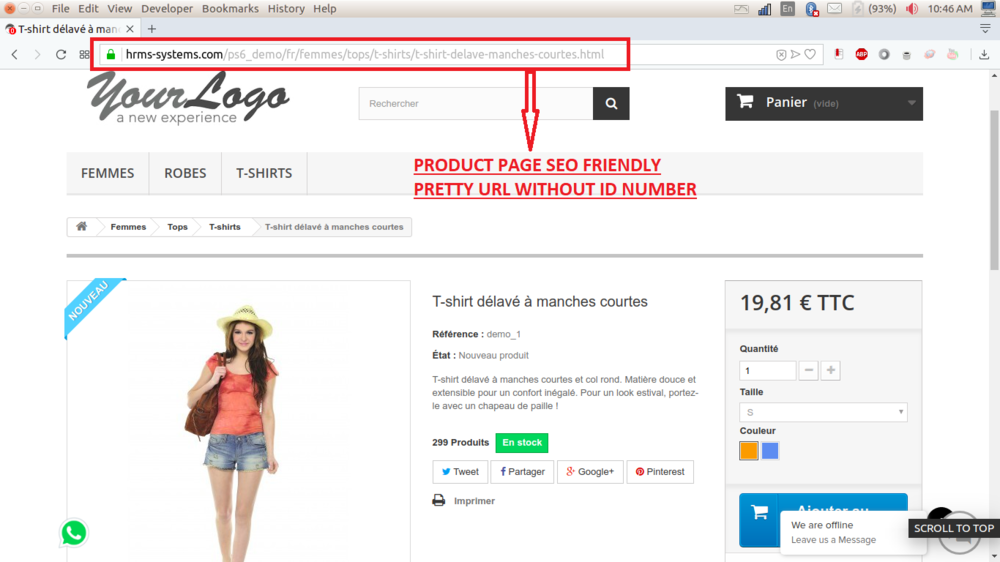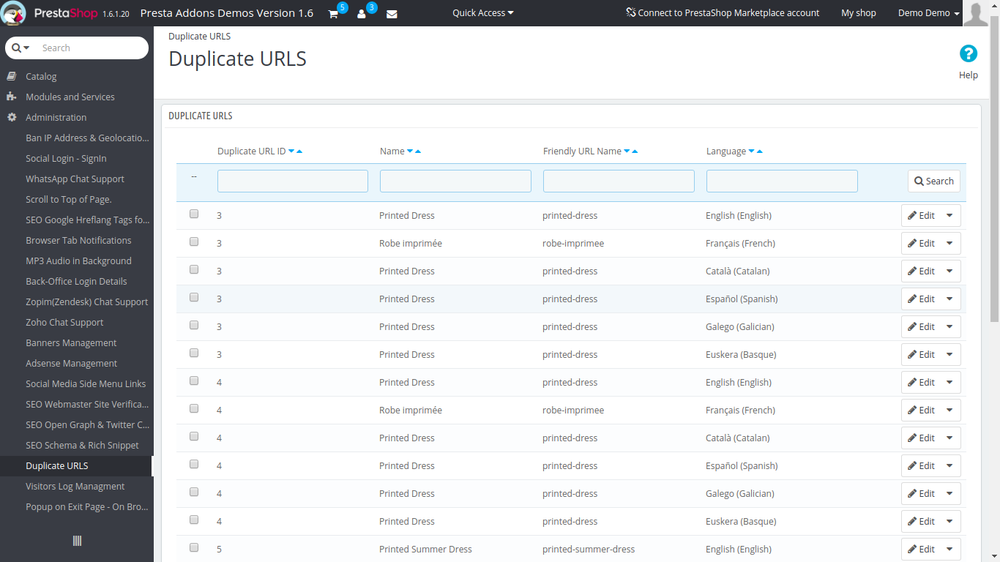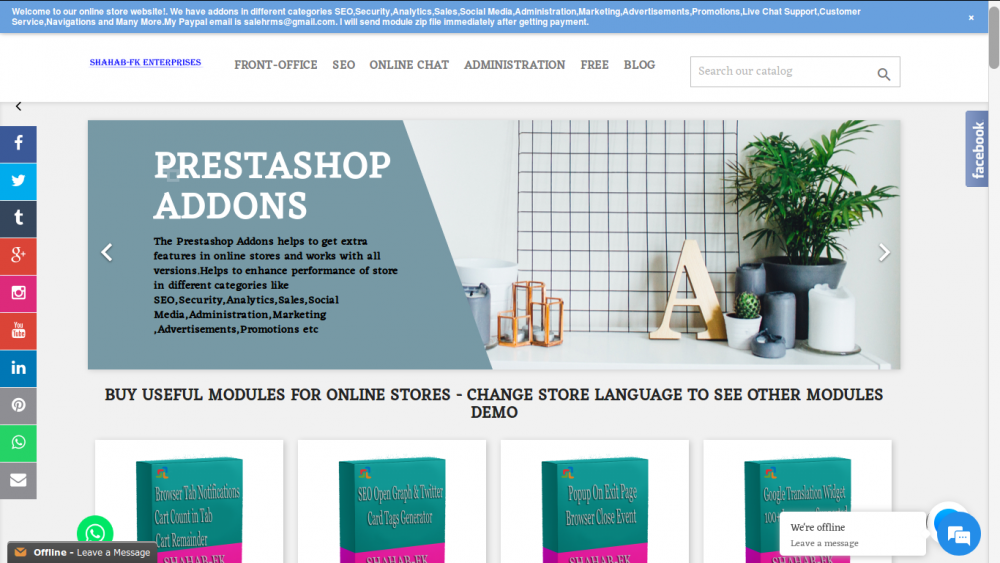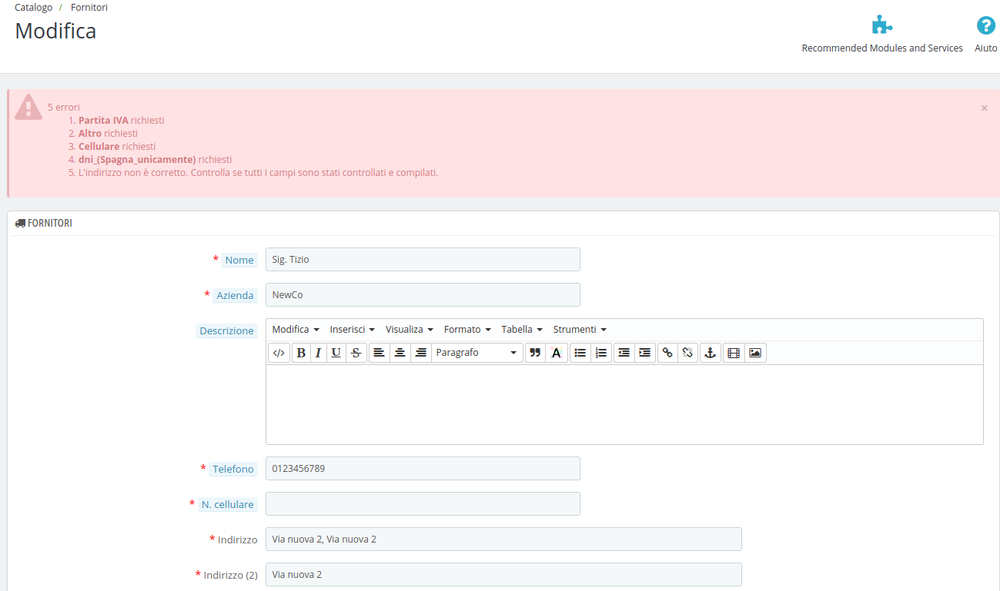Search the Community
Showing results for tags 'Supplier'.
-
I used version 1.6 and when registering the product I was able to register supplier reference codes and different prices for each supplier, but now in version 8.1 I can only associate suppliers with my products, but the screen does not open for me to register references and prices from each supplier...
-
Tengo una tienda en PrestaShop 1.7.5.2, e incluí hace poco las referencias de proveedor a todos mis productos, pero al cabo de unos días, note que las referencias de proveedor de ciertos productos se están eliminando solas. Al observar los productos donde ocurre esta situación veo que no siguen u...
- 4 replies
-
- supplier
- desarrollo 1.7
-
(and 2 more)
Tagged with:
-
how to filter back office product list page by supplier id,
- 38 replies
-
Currently I am modifying the feeder module because my client wants to display a list of certain values. However, one of these values is the name of the supplier(s), but it doesn't seem to display the name. What I have already tried is adding the following smarty variable to rss.tpl: {...
-
- feeder
- feeder prestashop
- (and 8 more)
-
Καλησπέρα. Θέλω να βάλω το faceted search στης σελίδες του Manufacturer, του Supplier και του Search page. Ακόμη θέλω να βάλω στο faceted search να κάνει φίλτρο τους Suppliers (όπως κάνει τους manufacturers). Υπάρχει κάποιος που να το έχει κάνει ή έχει να προτείνει κάποιο module δοκιμ...
- 6 replies
-
- 1.7
- manufacturer
- (and 4 more)
-
I need that when a client makes an order from several suppliers, the shipping costs of each supplier add up. Example: an order for a product that weighs 1kg from the supplier Biedma Ferreteria (BF ..) charges a cost of 4.84 If the order is for a barbecue that weighs 30kg, it charges you 16.94 I...
-
- php
- shipping cost
-
(and 1 more)
Tagged with:
-
Is a copy of order or order notification supposed to be sent to seller ? as a matter of course by Prestashop ????! As I am not getting any emails only when paid via Paypal. I have found and installed Mail alerts module v3.6.1 But this does not cure my problem. Anybody any advice.
- 9 replies
-
- supplier
- notification
-
(and 3 more)
Tagged with:
-
Dear all, I need a Shipping cost module: The cost based on: - Matrix of Iso code (State). From State of Supplier to State of Customer - Weight There is no modules on Addons market can do that. Why? In our country, noone cares zipcode/postalcode, the...
-
I already know it is possible to have multiple suppliers for one product, but is it possible to reflect what quantity each of them has (either delivered or in stock). So basically what I am asking is: Is it possible to keep track of how much 2 different suppliers have supplied of the same product?
-
Good day We are looking for Prestashop Developer I need an adjustment. Shopping cart dividing orders for each supplier transport separately. If shopping cart products from one vendor combine transport as a pre-selected prestashop. If there is more than one supplier in the ba...
-
- orders
- transport separately
-
(and 2 more)
Tagged with:
-
Salut à tous, Salutations du jour. Une URL conviviale est une adresse Web facile à lire et qui comprend des mots décrivant le contenu de la page Web. Ce type d'URL aide les visiteurs à se souvenir de l'adresse Web et à décrire la page aux moteurs de recherche. Une bonne structure peut aide...
- 1 reply
-
- friendly seo url
- friendly url
- (and 18 more)
-
Hello , I'm trying to increase the number of items I can put in my supplier references. Currently we are limited at 64 , but we need more than that (At least 85) We have tried to make chnages in varchar(128) in ps_product in our database, and in product.php (classes/product) but i...
-
Dobrý den, pokouším se přidat název dodavatele a odkaz na stránku s výpisem produktů tohoto dodavatele na stránku produktu. Překopíroval jsem kód zobrazení výrobce: {if isset($product_manufacturer->id)} <dt class="name">{l s='Brand' d='Shop.Theme.Catalog'}</dt>...
-
Hi! I'm testing a local installation of Prestashop 1.6.1.18 with default theme. I'm getting this errors when I try to create a new supplier. I've disabled the B2B mode, but it doesn't resolve this issue. I've also disable the obligatoriness of fiscal code inside Localization -> Nation -> I...
- 1 reply
-
- error creation
- supplier
-
(and 1 more)
Tagged with:
-
Bonsoir, les benevoles excuse moi d'abord de ma mauvaise langue je veux ajouter un menu deroulant codepostal a la page product.tpl et du code php a la page controllers/front/productcontrol.php afin de traiter le choix du magazin(entrepot - warehouse) que le client a choisi du...
-
- retrait magazin
- transporteur
-
(and 3 more)
Tagged with:
-
Hello, if anyone might know how could the product page show more suppliers who have the same product with different prices? Regards.
-
Hi, I'm a complete newbie to PrestaShop and OOP and would appreciate some help. I am trying to write a override to the mailalerts module to be able to send a notification email to either the supplier or the manufacturer of the product which is ordered. I know you can add a merchant email but th...
- 14 replies
-
Hi, im trying to solve this "problem" for 3 days.... but no luck. I searched the forum... stil no solutions. I whant to show supplier description on pruduct page under the tab. I successfully add supplier name, supplier reference. I have used this for description in .tpl {$product...
- 26 replies
-
- product
- description
-
(and 1 more)
Tagged with:
-
Display suppliers logo on HomePageCategorieById Module
kalaiarasan posted a topic in Core developers
Hello,My website is about coupon and deal website i.e running through affiliate program.So I am suppose to display suppliers logo on product.I tried on product-list.tpl and it's working fine but not working on the module"HomeCategorieById".The code I used to display Supplier logo is <img src="{$...- 1 reply
-
- supplier
- prestashop 1.6
- (and 6 more)
-
Hi, I was wondering if it is possible to add the supplier details like (phone, name, address) into the order_conf.html template that goes out to the customer. for example: {supplier_name} = 'Supplier' {supplier_address} = 'Prestashop lane 231' etc... In classes/PaymentModule.php i tried to add...
- 1 reply
-
- Supplier
- email tags
-
(and 1 more)
Tagged with:
-
Please read carefully Since we released the first version of our integration tool we have meet many people struggling on creating a products catalogue, therefore we decide to add here some tips on what you need to have and the steps to need to follow to create your shops catalogue as you want...
- 4 replies
-
- 2
-

-
- icecat
- supplier integration
- (and 8 more)
.png.022b5452a8f28f552bc9430097a16da2.png)


